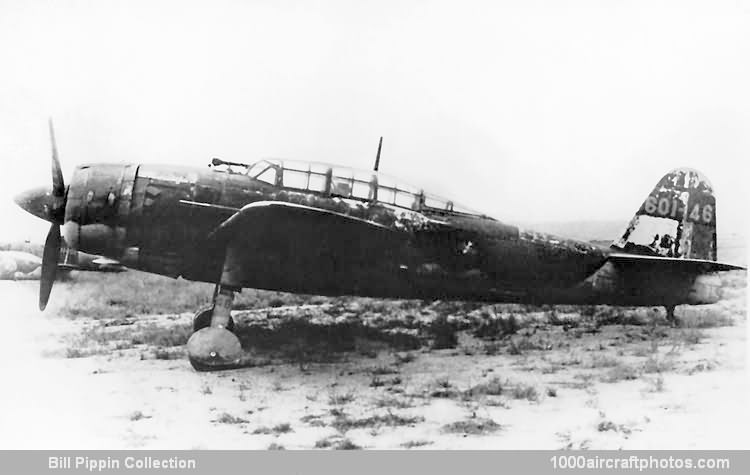12/29/2014. Remarks by Johan Visschedijk: "Well-proportioned and purposeful in appearance, the Yokosuka D4Y possessed an excellent performance and owed much of its concept to the German He 118, for whose manufacturing rights Japan negotiated in 1938. Designed as a fast carrier-based attack bomber and powered by an imported Daimler-Benz DB 600G engine, the D4Y1 was first flown in December 1941; D4Y1-C reconnaissance aircraft were ordered into production at Aichi's Nagoya plant, the first of 660 aircraft being completed in the late spring of 1942. The first service planes were lost when the Soryu was sunk at Midway.
Named Suisei (Comet) in service and code-named "Judy" by the Allies, many D4Y1s were completed as dive-bombers, and 174 Suiseis of the 1st, 2nd and 3rd Koku Sentais (Carrier Divisions) were embarked in nine carriers before the Battle of the Philippine Sea. However, the aircraft were intercepted by American carriers, and suffered heavy casualties without achieving any success. A new version with an 1,400 hp Aichi Atsuta 32 engine appeared in 1944 as the D4Y2 but, in the interests of preserving high performance, nothing was done to introduce armor protection for crew or fuel tanks, and the sole improvement in gun armament was the inclusion of a 0.52 in (13.2 mm) gun in the rear cockpit, replacing the previous 0.312 in (7.92 mm) gun. This version suffered heavily in the battle for the Philippines.
Problems of reliability with the Atsuta (DB 601) engine led to adoption of an 1,560 hp Kinsei 62 radial in the D4Y3, and this engine was retained in the D4Y4 which was developed in 1945 as a single-seat suicide dive-bomber. A total of 2,033 production D4Ys was completed."
